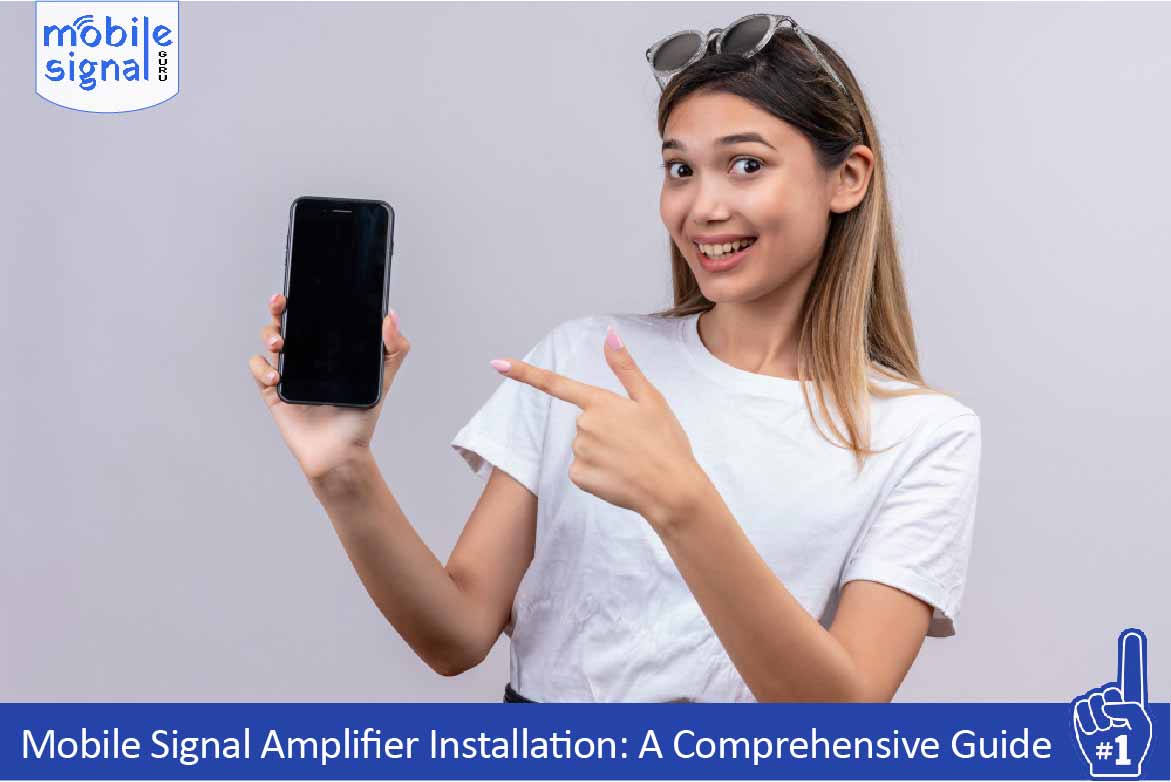Mobile signal amplifiers, also known as signal boosters, are essential devices for improving weak cellular signals in areas with poor coverage. Whether you’re in a remote location, have thick walls, or are surrounded by obstructions, a mobile signal amplifier installation can help ensure strong and consistent signal strength. A mobile signal amplifier installation may seem complex, but with the right approach, you can do it easily. This guide will walk you through the entire process, providing expert tips to ensure optimal mobile signal amplifier installation and performance.
What Is a Mobile Signal Amplifier?
A mobile signal amplifier is a device designed to improve weak cellular signals. It captures the weak signal from outside, amplifies it, and rebroadcasts it inside your home, office, or vehicle. Signal boosters work with all major carriers and can amplify 3G, 4G, and even 5G signals, depending on the device.
Key Components of a Signal Amplifier
Before diving into the installation process, it’s important to understand the main components of a signal amplifier:
- External Antenna: Captures the weak signal from outside.
- Amplifier (Booster Unit): Amplifies the captured signal.
- Internal Antenna: Rebroadcasts the amplified signal inside the desired area.
- Cables: Connect the antennas to the amplifier.
Step-by-Step Guide to Installing a Mobile Signal Amplifier
1. Check Your Signal Strength
Before installing your signal amplifier, it’s important to check the signal strength outside your home or office. Use your phone’s signal bars or a signal strength app to identify the areas with the best reception. Aim to find a location with at least two to three signal bars, as this is where you’ll place your external antenna.
2. Select the Right Location for the External Antenna
The external antenna plays a crucial role in capturing the best signal. Place it on your roof, an outdoor wall, or any elevated surface to maximize reception. Ensure that the antenna faces the nearest cell tower for better performance. Use online tools or apps to locate the nearest tower in your area.
Pro Tip: Avoid placing the external antenna near metal objects or heavy obstructions that may interfere with signal quality.
3. Mount the External Antenna
Once you’ve found the best location, securely mount the external antenna. Most antennas come with mounting brackets or poles for easy installation. Ensure the antenna is stable and facing the cell tower for optimal signal capture. Follow the manufacturer’s instructions for proper positioning.
4. Connect the External Antenna to the Amplifier
Next, connect the external antenna to the signal amplifier using the provided coaxial cable. Ensure that the cable is tightly secured and that the connection is free from interference. Most amplifiers have a dedicated port labeled for the external antenna, making this step straightforward.
5. Place the Amplifier in a Central Location
The signal amplifier should be placed in a central location inside your home or office. This ensures that the boosted signal reaches all areas. Avoid placing the amplifier in areas with too many obstacles, as this may reduce its effectiveness. Ensure the amplifier is plugged into a power source.
Pro Tip: Keep the amplifier away from other electronic devices that may cause interference.
6. Install the Internal Antenna
Now, install the internal antenna, which will rebroadcast the boosted signal. Place the antenna in a location where you need the most signal improvement, such as your living room, workspace, or central hallway. The internal antenna should be at least 15-20 feet away from the external antenna to avoid interference.
7. Connect the Internal Antenna to the Amplifier
Using the second coaxial cable, connect the internal antenna to the amplifier. Ensure that the connection is tight and secure. Double-check the proper and tight connection of all cables to avoid signal loss.
8. Turn on the Signal Amplifier
After connecting everything, power on the signal amplifier. The device will automatically start amplifying the signal. Most modern amplifiers come with indicator lights or LCD displays that show the signal strength and whether the system is functioning correctly.
9. Test the Signal Strength
Once the amplifier is running, test your mobile signal indoors. Walk around your home or office to check if the signal strength has improved. If necessary, adjust the positioning of the internal or external antennas for better coverage.
Common Troubleshooting Tips
Even with a perfect installation, issues may arise. Here are a few common problems and solutions:
- Weak Signal After Installation: If your signal is still weak, ensure the external antenna is positioned correctly. Move it to a higher location if needed.
- Interference: Ensure there’s enough distance between the external and internal antennas to avoid feedback (oscillation).
- No Signal Boost: Check that all cables are securely connected and that the amplifier is properly powered on.
Maintenance Tips for Your Signal Amplifier
To keep your signal amplifier working efficiently, perform regular maintenance:
- Check Cable Connections: Ensure that all cables are tightly connected and free from damage.
- Clean Antennas: Keep both external and internal antennas clean to ensure optimal signal capture and broadcast.
- Monitor Performance: Periodically check your signal strength to ensure the amplifier is functioning correctly.
Conclusion
A mobile signal amplifier installation can significantly improve your mobile reception, especially in areas with poor signal coverage. By following these simple steps and paying attention to key details, you can set up your signal amplifier for optimal performance. Whether you’re at home, in the office, or on the road, a well-installed signal booster ensures stronger, clearer mobile signals for better connectivity.
 Australia (AUD)
Australia (AUD) Denmark (DKK)
Denmark (DKK) France (EUR)
France (EUR) Germany (EUR)
Germany (EUR) Ireland (EUR)
Ireland (EUR) Malta (EUR)
Malta (EUR) Netherlands (EUR)
Netherlands (EUR) New Zealand (NZD)
New Zealand (NZD) Norway (NOK)
Norway (NOK) Spain (EUR)
Spain (EUR) Sweden (SEK)
Sweden (SEK) UAE (AED)
UAE (AED) United Kingdom (GBP)
United Kingdom (GBP)
